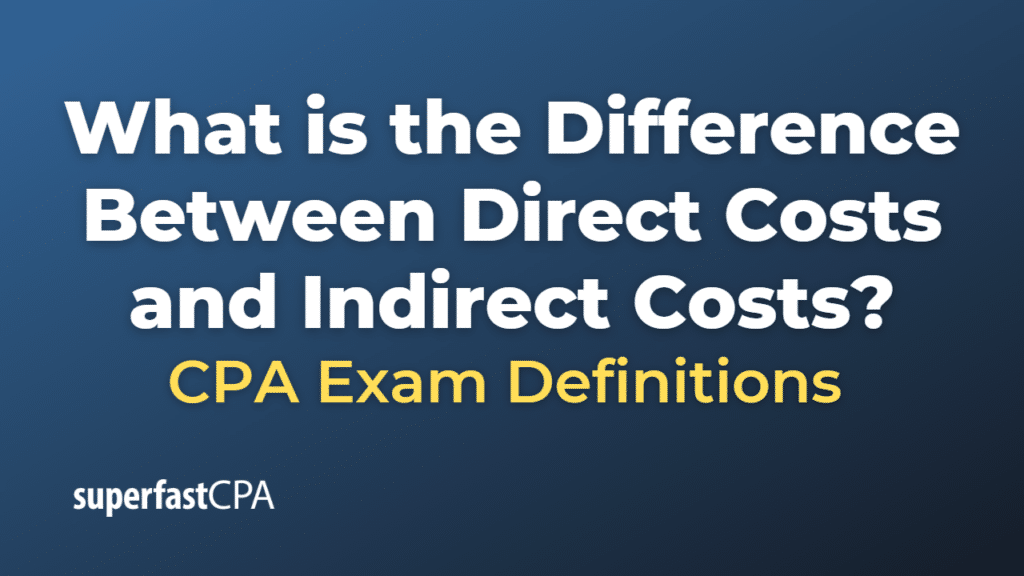Difference Between Direct Costs and Indirect Costs
Direct costs and indirect costs are two categories of expenses that businesses incur, and they differ in terms of how they can be traced to a product or service.
- Direct Costs: These are expenses that can be directly traced to the production of a specific product, service, or project. They’re often variable costs, meaning they increase or decrease with the level of production. Direct costs typically include:
- Direct labor costs, such as wages for employees who work directly on the product.
- Direct materials, which are raw materials used specifically in the manufacturing of the product.
- Indirect Costs: These are expenses that cannot be directly linked to a specific product or service. They are often fixed costs that need to be paid regardless of the level of production or sales. Indirect costs often include:
- Rent or mortgage for a production facility.
- Utilities, such as electricity, water, and gas.
- Administrative costs, such as salaries for office staff and the cost of office supplies.
The distinction between direct and indirect costs can be crucial for businesses when it comes to pricing their products, managing their finances, and determining profitability.
Example of the Difference Between Direct Costs and Indirect Costs
Let’s take an example of a company that manufactures furniture.
Direct Costs:
- Direct Labor: This would be the wages paid to the carpenters who are physically making the furniture. If a carpenter spends five hours working on a table and is paid $20 per hour, the direct labor cost of that table is $100.
- Direct Materials: This would be the cost of the wood, screws, glue, and any other materials directly used to make the furniture. If these materials cost $50 for a table, that’s the direct material cost.
So for each table produced, the direct costs are $150 ($100 for labor and $50 for materials).
Indirect Costs:
- Rent: The company must pay rent for the factory where the furniture is produced. If the monthly rent is $2000, this cost is indirect because it doesn’t tie directly to any specific piece of furniture—it’s a cost incurred regardless of how many pieces are made.
- Utilities: The cost of electricity to power the machinery and heat the factory, as well as water and other utilities, are indirect costs. They’re necessary for production, but they don’t tie directly to any specific piece of furniture.
- Administrative Costs: The salaries of administrative staff, office supplies, etc., are also indirect costs. These expenses are necessary for the overall operation of the business but can’t be directly linked to a specific piece of furniture.
While direct costs can be easily traced to each product, indirect costs are shared among all products and need to be allocated in some way, often based on the amount of direct labor or machine hours used for each product.













